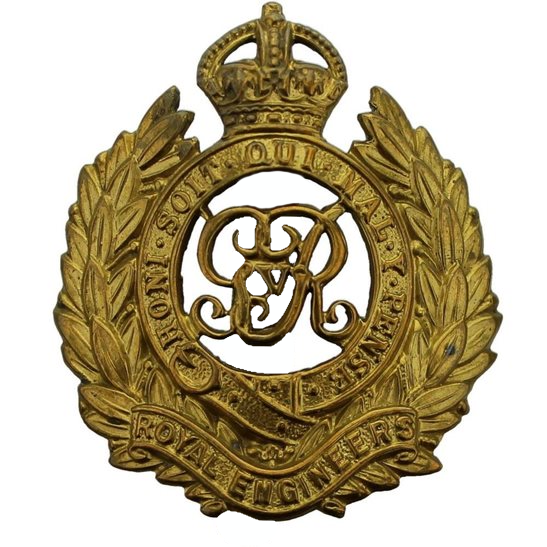Personal Details
Born: In Bronington on the 20 December 1893 (baptised 20 January 1894).
Family: The fourth child of William and Selina Clive of Fins Wood, Bronington, Flintshire. George married Lucy Wainwright in 1922 and together they were parents to Dorothy, born 12 September 1924.
Civilian Occupation: In 1911 he was employed as a farm labourer on his brother’s farm in Ash Parva. At the time of enlisting he was a Platelayer with the London & North Western Railway Co. and was a member of the National Union of Railwaymen. He was still employed in this role in 1939.
Residence: In 1939 he was living at Vicarage lane, Newcastle-Under-Lyme, Staffordshire.
Died: In 1952 aged 59.
Military Details
Regiment: Royal Engineers, 1st Division Railway Co.
Rank: Sapper
Service Number: 218238, 263472
Date of Enlistment: 22 January 1916
Date of Discharge: 23 November 1919
Reason for Discharge: Demobilisation
George was awarded the Campaign Medals (British War Medal, and Victory Medal).

The British War Medal (also known as 'Squeak') was a silver or bronze medal awarded to officers and men of the British and Imperial Forces who either entered a theatre of war or entered service overseas between 5th August 1914 and 11th November 1918 inclusive. This was later extended to services in Russia, Siberia and some other areas in 1919 and 1920. Approximately 6.5 million British War Medals were issued. Approximately 6.4 million of these were the silver versions of this medal. Around 110,000 of a bronze version were issued mainly to Chinese, Maltese and Indian Labour Corps. The front (obv or obverse) of the medal depicts the head of George V. The recipient's service number, rank, name and unit was impressed on the rim.
The Allied Victory Medal (also known as 'Wilfred') was issued by each of the allies. It was decided that each of the allies should each issue their own bronze victory medal with a similar design, similar equivalent wording and identical ribbon. The British medal was designed by W. McMillan. The front depicts a winged classical figure representing victory. Approximately 5.7 million victory medals were issued. Interestingly, eligibility for this medal was more restrictive and not everyone who received the British War Medal ('Squeak') also received the Victory Medal ('Wilfred'). However, in general, all recipients of 'Wilfred' also received 'Squeak' and all recipients of The 1914 Star or The 1914/1915 Star (also known as 'Pip') also received both 'Squeak' and 'Wilfred'. The recipient's service number, rank, name and unit was impressed on the rim.

